What does climate change mean for the Caribbean islands?
Climate change has a significant impact on the Netherlands, but an even greater effect on the Caribbean part of our Kingdom. Rising sea levels threaten to submerge dozens of holiday resorts and vital infrastructure on Aruba, Curaçao, Sint Maarten, Bonaire, Sint Eustatius and Saba. In addition, the islands are facing increased drought and more intense storms. How are they preparing for the future?
First, the bad news: climate change poses serious challenges for the Caribbean islands. They are expected to face higher temperatures, up to one metre of sea level rise by 2100, summer droughts, and increased damage from more powerful cyclones. This spells trouble for nature, tourism, agriculture and fisheries, the water supply, and essential services such as roads, schools and hospitals.
The effects are already clearly visible. Nearly a third of the seagrass and almost half of the coral have disappeared, and further decline is happening at a rapid pace. This is not only a great loss, it also weakens the natural protection of the coastline, allowing the sea to slowly erode parts of the islands. Mangrove forests are also vanishing quickly, even though they serve as vital nurseries and feeding grounds for many species, help stabilise the coastline, and store carbon dioxide. As more natural habitats are lost in the future, so too is a key source of income: tourism.
In addition, there is already a reduced supply of fresh water—for drinking and for agriculture. Rainfall is decreasing, higher temperatures cause more evaporation, and rising sea levels are making freshwater supplies on land increasingly saline.

Climate action in the making
The Caribbean islands are working hard on plans to prevent further problems and prepare for rising sea levels. Many of these plans are still relatively new, with some still in development. Since 2020, the BES islands (Bonaire, Sint Eustatius and Saba) have had the Nature and Environmental Policy Plan Caribbean Netherlands 2020–2030, and in 2024, Curaçao launched its Climate Strategy Roadmap: Kòrsou na kaminda. In 2025, Aruba’s National Climate Resilience Council (NCRC) will present its own National Adaptation Strategy.
Since 2024, digital climate impact atlases have also been introduced, mapping the vulnerabilities of the BES islands and Curaçao. These include maps showing different scenarios for future coastlines, the health of coral reefs, and typical hurricane paths. Atlases for Aruba and Sint Maarten are expected in 2025. These resources continue to grow as new data and insights are added.
The rest of this article provides a brief overview of the climate challenges facing the Caribbean part of the Kingdom, along with examples of initiatives that aim to tackle them.
"The aim is to help governments, residents and communities understand the impacts of climate change in their own region so that they can better prepare for it."
The BES islands
The BES islands are special municipalities of the Netherlands, collectively known as the Caribbean Netherlands. Each island faces its own unique challenges, but there are also many shared concerns. All three are working to reforest their landscapes, restore coral reefs and mangrove forests, reuse wastewater, and collect rainwater. A major problem they also have in common is the presence of thousands of free-roaming grazers—mostly goats—that cause serious damage to the natural environment.

In their joint Nature and Environmental Policy Plan Caribbean Netherlands 2020–2030, the BES islands have outlined four main goals: saving the coral reefs, preserving and restoring key natural areas, promoting sustainable land and water use to support the economy, and creating the conditions needed for long-term, sustainable outcomes. In practical terms, this means improving water quality, tackling invasive plant and animal species, ensuring tourism is balanced with nature, and investing in education and public awareness.
Bonaire
Bonaire is the most advanced of the islands when it comes to climate planning. And rightly so—according to research by VU University Amsterdam, natural areas such as the saliñas, Lac Bay and Klein Bonaire could be underwater by 2050 due to rising sea levels. Freshwater caves, home to bats, shrimp and crustaceans, are also becoming increasingly saline and risk being submerged. It's not just nature that's under threat—so is culture: both the island’s drinking water facility and the historic slave huts are at risk of being swallowed by the sea.
To restore the natural environment in and around Lac Bay and make sustainable tourism possible, the Bonaire National Parks Foundation (STINAPA) was established. STINAPA aims to study the water quality of the bay and reintroduce seagrass. Healthy seagrass and coral are not only vital for marine life, but also help stabilise the coastline by holding onto sand. STINAPA is also developing a coral nursery. In the most pessimistic scenario, only 13 of Bonaire’s 86 coral dive sites may remain by 2050—and by the end of the century, all coral around the island could be gone.

In 2019, the project Mangrove Maniacs was launched—a volunteer initiative dedicated to protecting mangrove forests and restoring damaged areas. The volunteers maintain existing waterways and dig new channels to ensure that water from the bay can also reach the back sections of the forest. This helps keep the water flowing and refreshed, which is essential for the health of the mangroves.
Staying on the coast, we find the Rotterdam-based start-up RoffaReefs, which is working in the waters around Bonaire to support reef fish populations by creating floating "nurseries". These allow young fish to grow up in the same waters where their eggs were laid, giving them a better chance of survival.

Saba
On Saba, a significant part of the island’s infrastructure is vulnerable to flooding and high waves. The drinking water facility, for instance, is located at the island’s lowest point. The same goes for the harbour, even though Saba depends on other islands for its energy and food supply. If a natural disaster were to strike elsewhere, Saba would face serious challenges too.
That’s why Saba’s climate plans focus on becoming more self-sufficient. The island is working towards a circular economy, and its solar parks already generate 40% of electricity demand on a sunny day. A new solar park is currently under construction, which should raise that figure to 89%. More and more households are collecting rainwater, and a special nursery has been set up where crops are grown in water-filled tubes (hydroponics). These can be moved into bunker-like shelters during hurricanes, helping to ensure a steady local food supply.
Saba’s natural environment is also under pressure. As temperatures rise, the island’s cloud forests can only survive at higher altitudes where there is enough moisture in the air. The lower parts are drying out and becoming increasingly vulnerable to cyclones and wildfires. One of Saba’s proposed solutions is to introduce ecosystem services—systems where nature conservation and management are financially supported.
Sint Eustatius
On Sint Eustatius, the challenges with dry cloud forests and dependence on other islands are also evident. The island relies on rainwater for its water supply, and the water plant is located directly by the sea. The oil terminal, archaeological heritage sites, power plant, and many hotels and restaurants are all situated in areas at risk of flooding.
In order to become self-sufficient in food, Sint Eustatius aims to move away from monoculture farming. Growing a single crop repeatedly makes the soil more vulnerable and, over time, less fertile. However, growing a variety of crops is challenging for the agricultural sector. To address this, research is being conducted into agroforestry, where diverse edible trees and shrubs mimic a fertile forest edge. This approach is not only good for biodiversity but hopefully will also benefit food production!
In 2023, the St. Eustatius National Parks Foundation, in collaboration with Van Hall Larenstein University of Applied Sciences and the Saba Conservation Foundation, began coral restoration efforts by breeding long-spined sea urchins. These sea urchins help protect coral reefs by controlling algal growth.

Curaçao
Curaçao has its own Climate Strategy Roadmap: Kòrsou na kaminda. This strategy includes four main goals: 1) mapping climate risks, 2) becoming CO2-neutral in a just manner, 3) strengthening resilience to climate change, and 4) building capacity and raising awareness. Curaçao is working on better-protected nature reserves, smarter water management, climate-resilient infrastructure, improved coastal management, food security, and a diverse economy to reduce the country's dependence on tourism.
There are several inspiring initiatives in Curaçao that highlight the impact of climate change. One of these is the climate atlas, KlimaKòrsou, which not only features maps with climate data but also includes six stories by Curaçaoan writer Tyson Hill. In these stories, Hill brings the effects of climate change to life with tales such as ‘The Dry Days of Farmer Omar’ and ‘Lisa and the Extreme Heat’.

In 2023, Curaçao’s meteorological service raised awareness through the community programme ‘Kambio di klima den bo bario, bo ta kla p'e?’ (‘Climate Change in Your Neighbourhood, Are You Ready?’). As part of the Curaçao Climate Change Platform, the service visited neighbourhoods to discuss climate change and what residents can do for both their community and themselves.
A technical initiative is Zen Farm. Like in Saba, Zen Farm grows crops in water-filled tubes (hydroponics). The farm focuses on vegetables such as cabbage, carrots, and spinach, which typically grow in cooler climates. There is also the Nos Kunuku farm, which combines hydroponics with organic cultivation powered by solar energy, and D’Farm, which grows a variety of crops, including lettuce and fresh mint.
Aruba en Sint Maarten
Aruba and Sint Maarten, two autonomous countries within the Kingdom of the Netherlands, are also working on climate plans. Like the BES islands, these countries are focusing on issues such as deteriorating coral reefs, disappearing mangroves, and eroding coastlines.
Aruba’s National Climate Resilience Council will present its National Adaptation Strategy in 2025. The island’s infrastructure must be restructured, nature protected, and residential areas adapted to the new climate. How, for instance, will nursing homes be adjusted to cope with higher temperatures? What impact will this temperature have on occupational health and safety regulations? And how can new homes be made flood-resistant?

Sint Maarten faces the additional challenge of sharing its island with the French side, Saint Martin. This complicates efforts to create plans that make the entire island climate-resilient. And this is particularly critical, as Sint Maarten serves as an important transit hub for Saba and Sint Eustatius. So, if something goes wrong in Sint Maarten, these islands are also affected.
It is clear that much still needs to be done across all the Caribbean islands to tackle the impacts of climate change. Fortunately, there is a strong willingness to take concrete action for a safe future, and the first steps towards this goal have already been taken.








